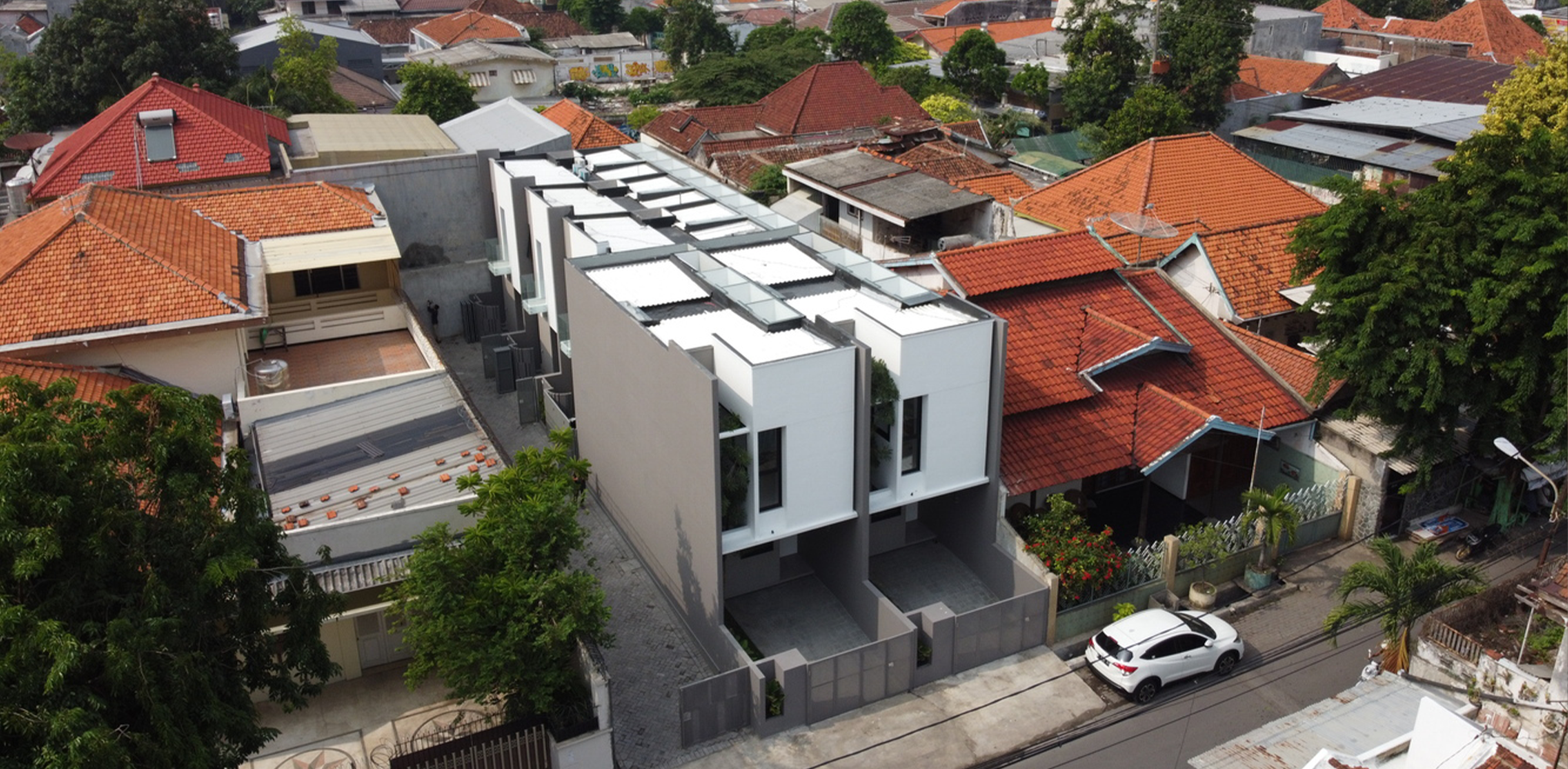The Non-Student Grand Prize Winner of the 2nd Annual One Drawing Challenge was Bless Yee, an Associate at Handel Architects, for her drawing “Together Alone”. This detailed sectional drawing encapsulated the turbulent events of 2020 within a hive-like network of subterranean chambers, forming an architectural story that all of society can relate to.
The story behind the drawing explores the ways in which we have been forced to reconsider the conventions of ‘normal’ life, searching for ways to connect in a world that has been fragmented by unprecedented crises. “This drawing cuts a section through hexagonal pods that encapsulate our inhabited spaces,” explains Yee.

“Together Alone” by Bless Yee, Non-Student Winner of the 2nd Annual One Drawing Challenge.
She continues: “The hexagonal shape represents our self-proclaimed strength and efficiency around our designs, the same efficiency that circulated the virus with rapid speed. The hexagonal framework is deforming under the pressure of an evolving reconciliation for how we cope with the virus in our daily lives. Our pods are juxtaposed against one another, revealing that we are closer together than we think, and that we must act together for the future.”
Architizer chatted with Yee about her award-winning image, the process behind its creation, and the power of architectural drawings as a narrative device.
Paul Keskeys: What does winning the One Drawing Challenge mean to you?
Bless Yee: It means that I must start drawing again, and that I have not lost my touch! Prior to the Covid lockdown, I had not created or drawn anything out of personal initiative for the past five years.
What were the primary challenges of conceiving your work, from forming the idea to the physical process of drawing?
Digesting the daily news in 2020 was a challenge in and of itself. I started drawing again to cope with the realities of what was going on in the world. However, I was also inspired by how people were adapting to ever changing situations and how everyone was working ‘together’ to do their part. This is the story that I wanted to tell.

Yee first created a ‘hive’ by pouring wax over hexagonal ice pieces, leaving a honeycomb-shaped pattern of voids that formed the basis for the drawing.
First, I needed to conceive of a framework to contain these personal experiences. How could I express the solid yet organic boundaries that separated us, but at the same time held us together? I created a physical model to depict this metaphor. I arranged hexagonal shaped ice (inhabitable space) on a tray and then poured paraffin wax (structural building elements) over it. The liquid wax surrounds the ice, and the ice tries to maintain its own shape against the wax as it hardens. Once the ice had melted, I poured the water out and used a photo of the resulting model as the framework and composition for the drawing.
As for the physical process of drawing, I had no access to a large format scanner or printer. But I still wanted to create a 36” by 36” drawing. So, I drew on 50-60 letter sized sheets of trace paper, scanned them to my laptop and stitched them together, layer by layer, in photoshop.
For your piece, why did you choose that specific illustration technique and format?
My desire was to create a drawing that anyone could comprehend, regardless of technical or digital understanding. I chose to hand draw each scene because it would evoke a more intimate and emotional atmosphere than an image that was purely digital. I drew the people at a large enough scale so that their experiences would carry as much presence as the structure that held them together. The drawing is formatted in a way that depicts no hierarchy. The viewer’s eye is to wander freely through each space.

Yee drew each individual detail separately before bringing them together for the final composition.
Do you have any other architectural drawings as conceptual as this?
Not yet! But I already have ideas of how I want to explore and develop this kind of drawing further, with a variation in theme and scale.
How did the process and workflow of creating your drawing compare to traditional architectural drafting?
Although the final drawing may not appear as the typical architectural section, the discipline, concept of scale, line weight and hatching required by traditional drafting were applied. However, out of deliberation I did not use a ruler. I did not use one so the illustration would depict a loss of order, a chaotic shapeshifting moment in time.

A detail depicting the toppling of a confederate statue. Many people within the scene are wearing masks to slow the spread of COVID–19.
What one tip would you give students and architects looking to win next year’s One Drawing Challenge?
Be in control of your tools, do not let your tools control you.
Any further thoughts?
I sincerely thank Architizer and the jurors for this recognition. I cannot wait to start on my next creation. I have received some requests for prints of this drawing. If you are interested, you can find a link to order a print via blessyee.com.
The wax/ice method was a personal technique I had developed during my last year at Columbia’s GSAPP program in a studio taught by LO-TEK. The days you had in school may be when you were the most creative. Do not forget them!
Check out every amazing winner and commended entry in the inaugural One Drawing Challenge here. Interested in participating in the 3rd Annual One Drawing Challenge? Register for competition updates now:
Register for the Next One Drawing Challenge









